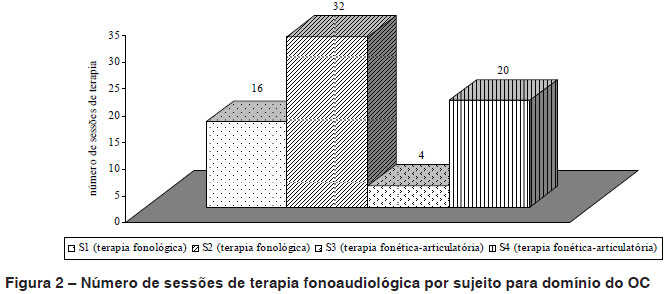PURPOSE: to verify the more effective therapeutic approach for children with phonological disorder who carry out the compensatory lengthening (SCL) strategy in cases of C¹C²V → C¹V. METHODS: we selected four subjects employing the simplification of SCL in CC, and had in its inventory phonetic segments [] and [l]. In the total of people, two were submitted to phonological therapy (PT), based on the model of the minimum pair and two therapy phonetic-articulatory (TA) emphasizing the co-articulation of the sound, the use of visual clues, tactile/kinesthetic and auditory, and articulatory training. Children received two weekly visits for the acquisition of CCV (80% of correct structure in spontaneous speech). To check the difference in time of phonetic and phonological therapy was applied the T Test for independent samples of 5% significance level. The therapeutic advances of the subjects were analyzed in a qualitative. RESULTS: in the comparison of the results in the sessions between the average obtained with each therapeutic model, we found that children receiving TA needed half of the time of the subjects that underwent PT, although not statistically significant (p = 0.40). It is relevant to highlight the difference in time of treatment in clinical practice,. CONCLUSION: children using SCL, benefit when submitted to therapy in order to promote an phonetic implementation and not the phonological organization, since that the patients who were exposed to TA obtained faster progresses when compared to the phonological model.
Phonetics; Speech Disorders; Speech Therapy



